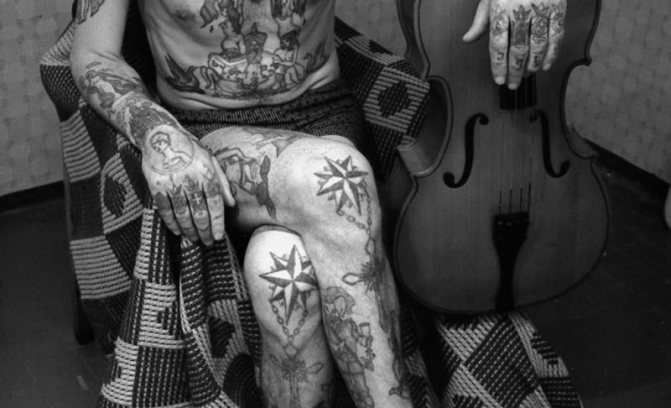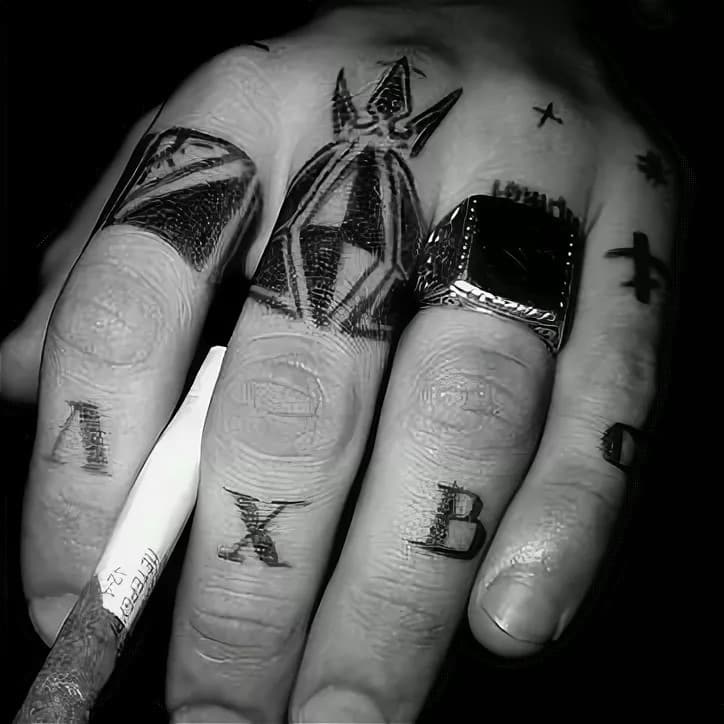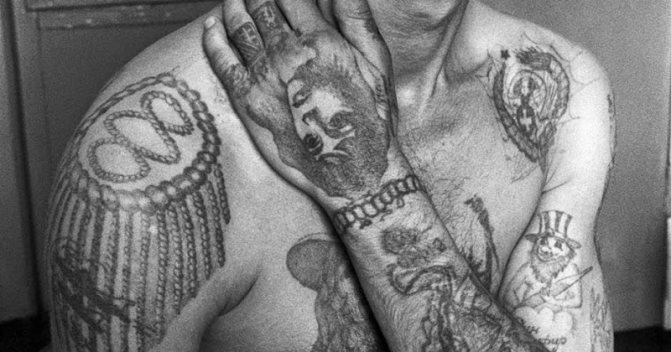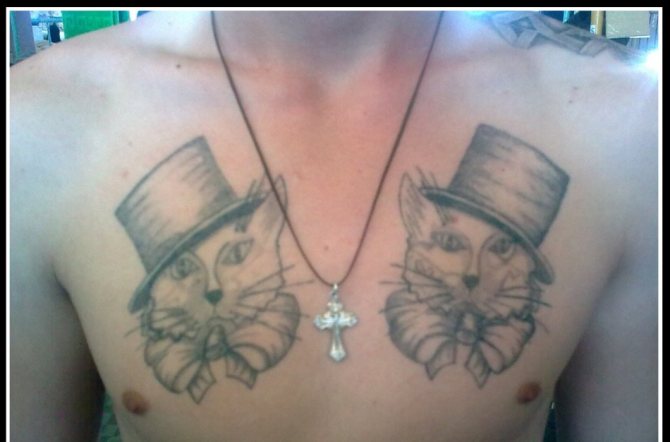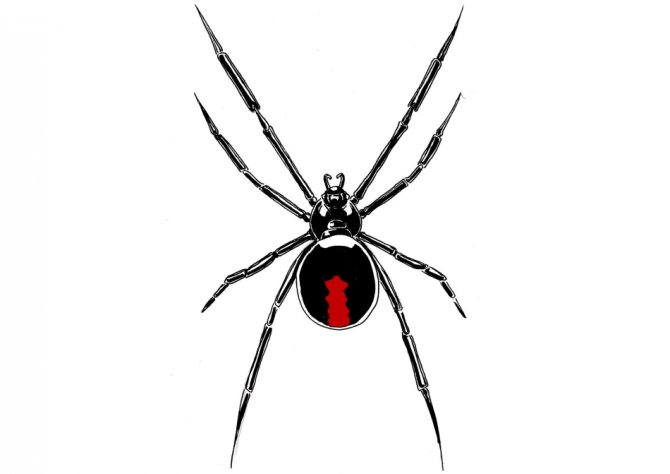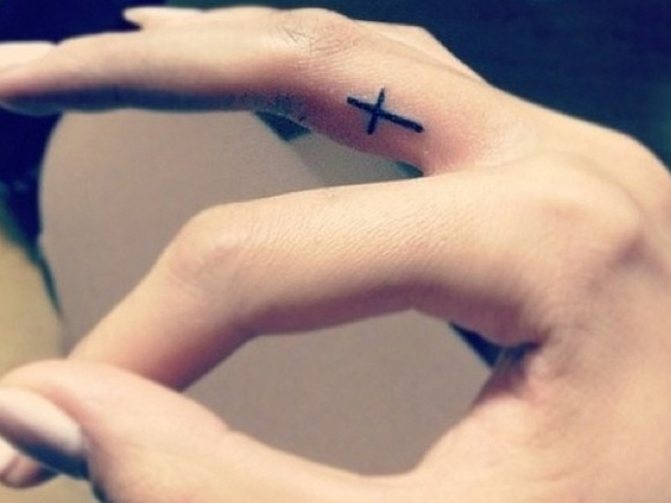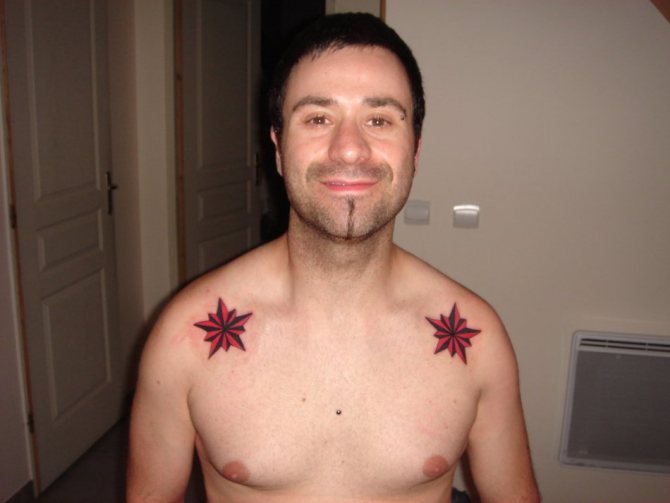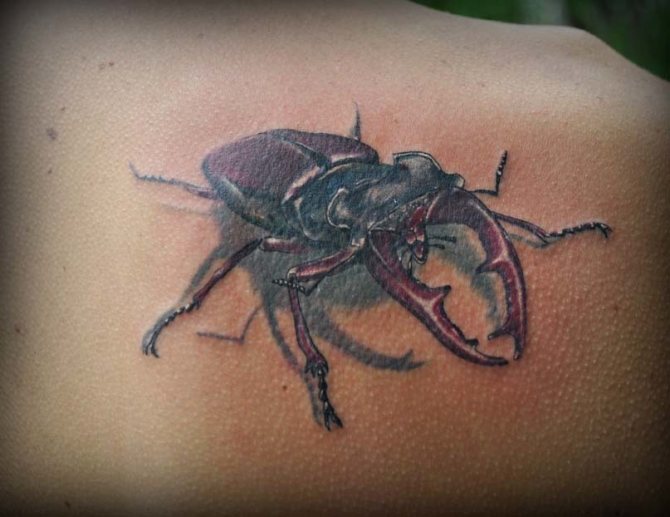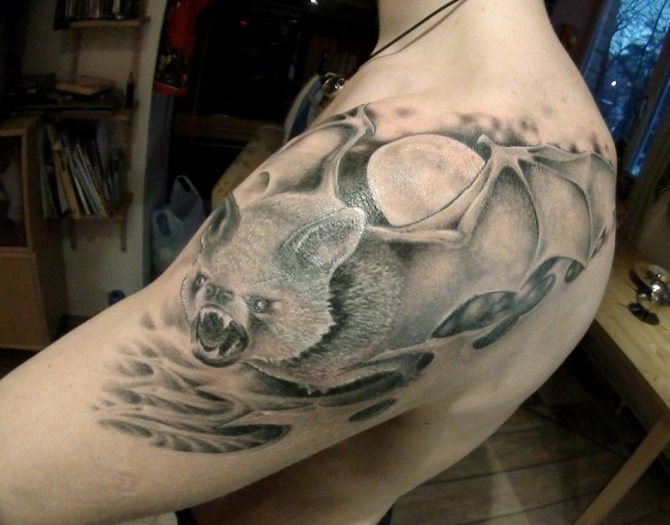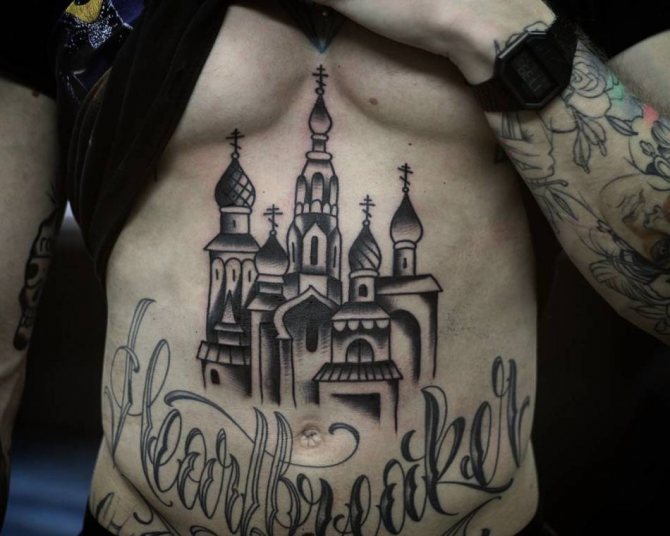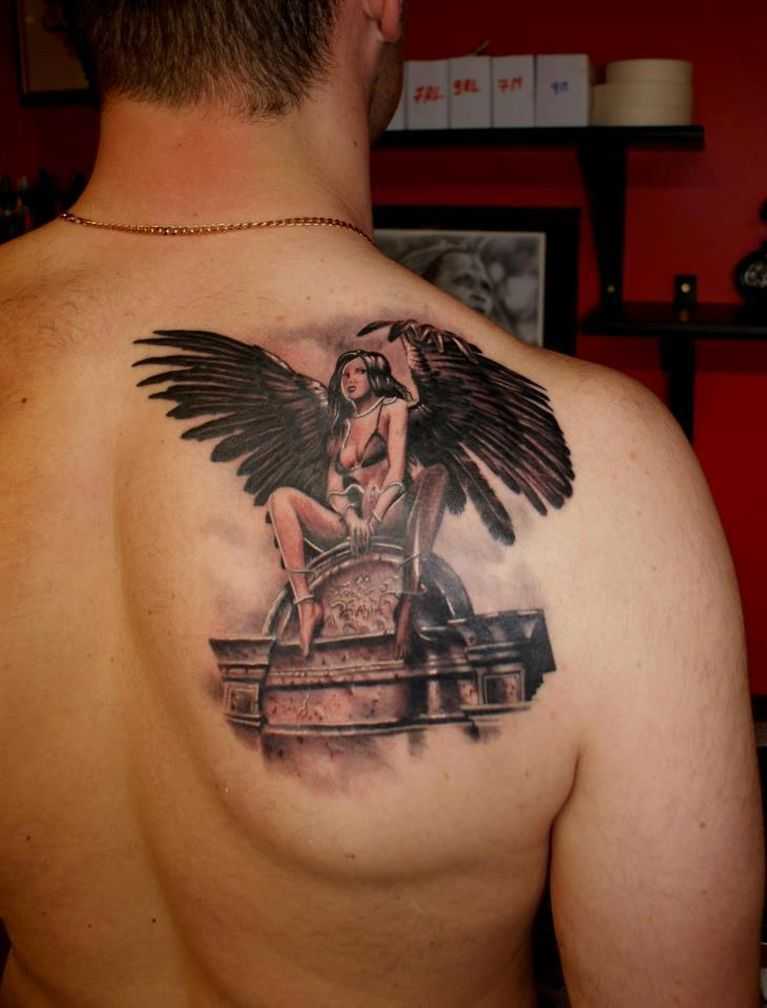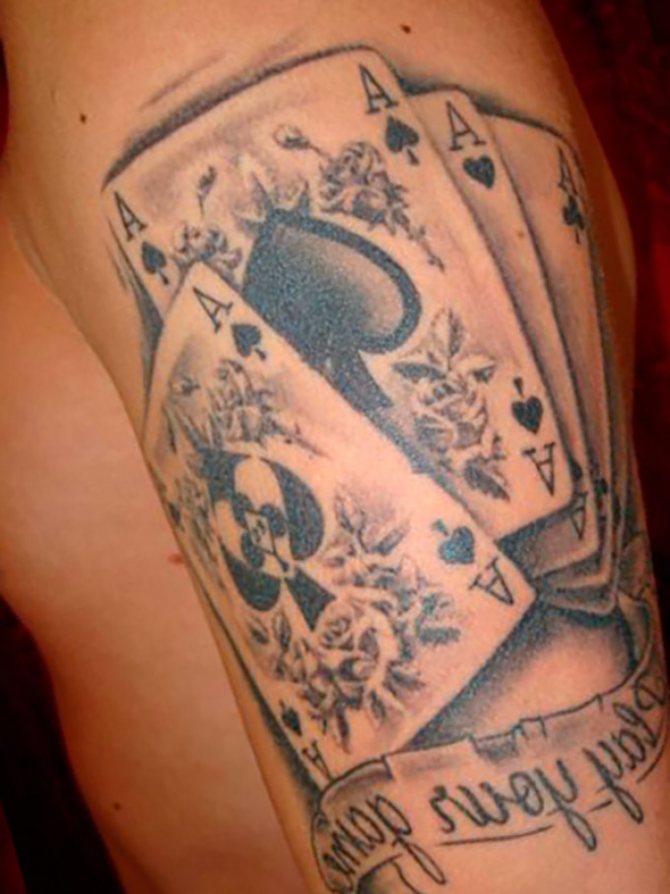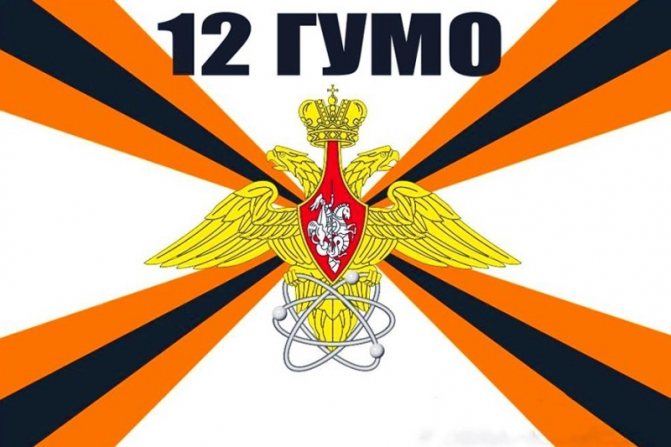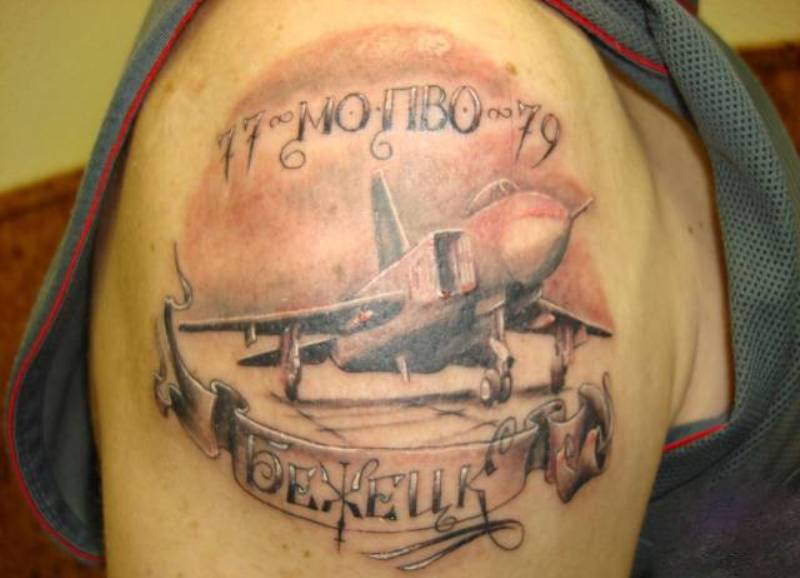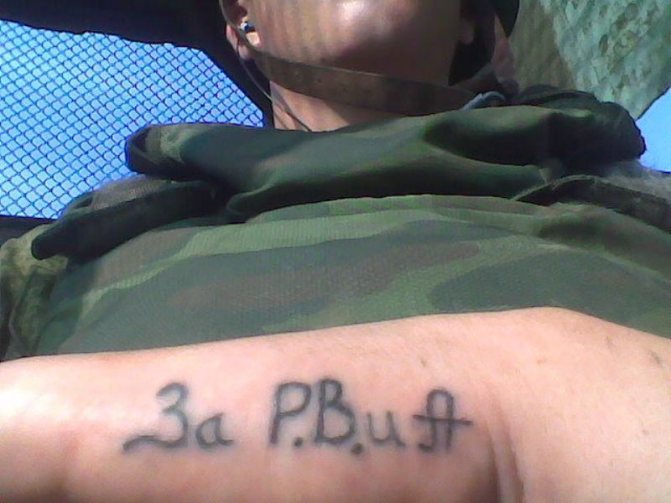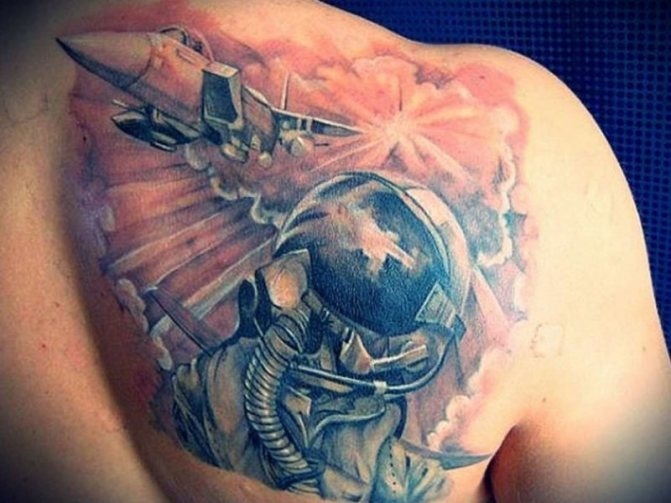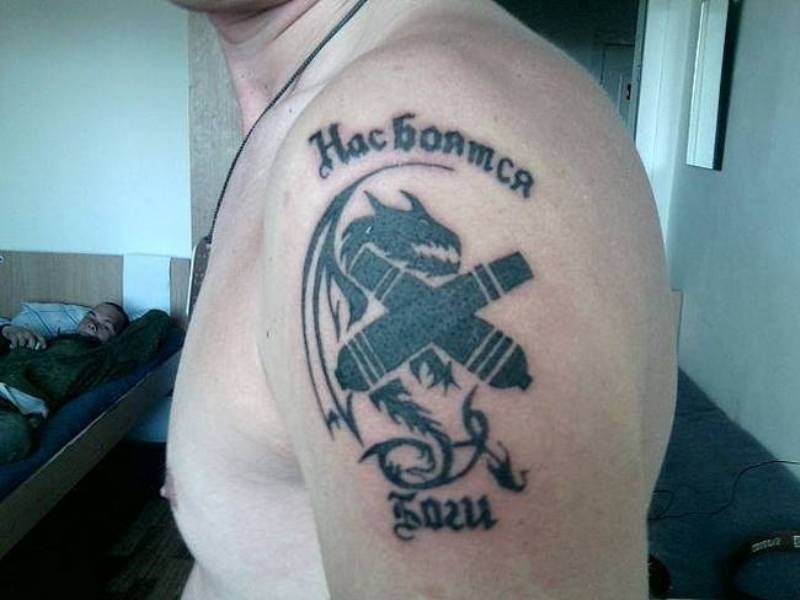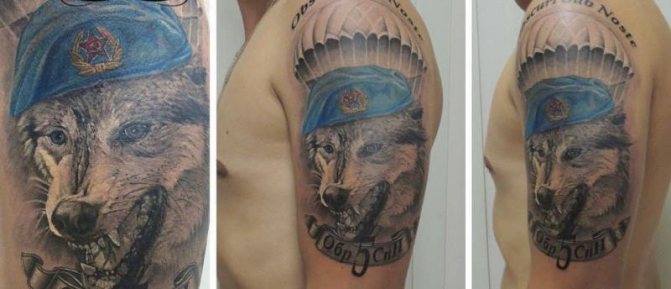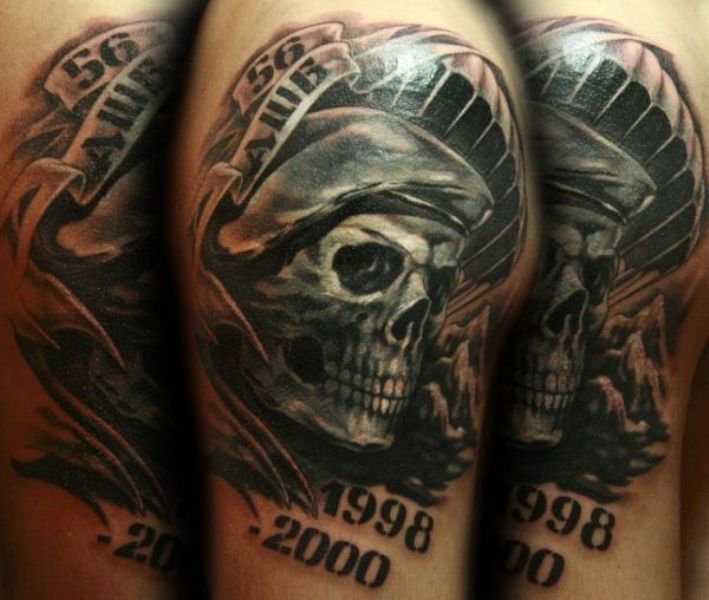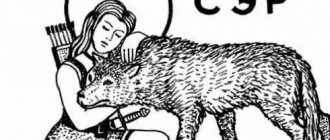Nakolka thief in law. Thief, and in general, what definition to give to this word. A man who took a pie and did not pay, you can call it the same. In the generally accepted understanding, these are people who live off stealing.
There is another meaning of the word which most of the population probably does not know. Thief in Law is the elite of the underworld, its generals.
The rings .
The tattoos of thieves in law on the fingers can tell a lot? Especially the rings. Their number corresponds to the number of trips to the zone. The color scheme is also important. Black tattoos should be associated with imprisonment, light-colored - with the will. In the rings, too, certain information is ciphered, which not everyone can read. In this case, everything is important in such a drawing, even the alternation of dark and light colors, as well as the location of figures and symbols.
- The crown. It was drawn mainly by the authorities. Such people occupied the highest levels in the hierarchy.
- Crosses. "Saying" that the person has committed a serious crime, will never cooperate with law enforcement agencies, is not amenable to correction.
- Chess variations. Reporting that the person has passed the zone.
- Another tattoo of a thief in law is a slash. Meaning: life went wrong, had to go to the zone. These rings are often applied to those who have served time in juvenile detention.
- Swastika and skulls on a white background. These are the so-called deniers. That is, people who are aggressive and prone to violence.
- Rhombuses are tattooed on the leaders of various criminal groups.
- The cat on the ring means that the person is a native of the prison and has no memory of any other life.
- Churches on the rings can "talk" about the number of years spent in prison, or the number of trips.
The meaning of the thieves' tattoos on the fingers, how they look, the history of appearance
It so happens that in the world of crime, almost every individual who served time, is not left without a tattoo. All prison and thieves' tattoos are very specific and people far from this subject do not always know what any particular image means.
Thieves' tattoos on fingers, hands, feet, back and stomach in the 40-50s. Twentieth century were of great importance. With this or that body image convicts denoted their place in the criminal environment. The tattoo-masters of that time or ring-bearers knew well the meaning of each tattoo, as they could be "dealt with" rather harshly for applying an image that did not correspond to reality.
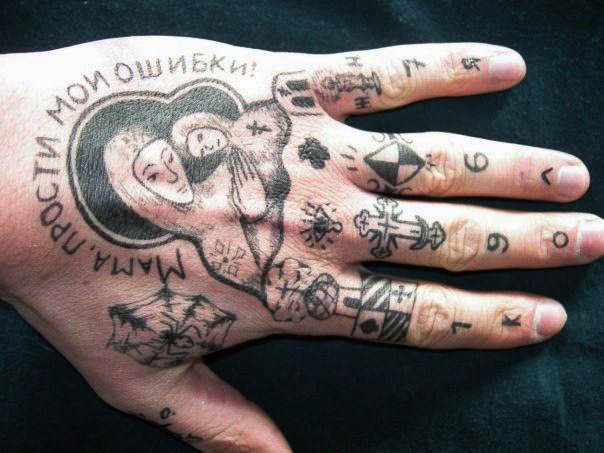
Thieves' tattoos on fingers
The meaning of any particular tattoo is well understood by many individuals currently serving or former prison sentences and by specialists - masters of imposing body tattoos.
A great contribution to the study of prison tattoos was made by Arkady Bronnikov, Minister of Internal Affairs of the USSR. For about 30 years (from the 1960s through the 1990s) he studied prison tattoos and compiled the most comprehensive archive of prison tattoos to date.
In gathering material, he researched a great deal of information on the subject of the body and tattoos of inmates, and talked extensively with them. He explained that the unspoken law of the criminal world is that prisoners who do not have tattoos are considered "black sheep" and are often treated with contempt by others.
A prison tattoo is a kind of "passport" and biography of the person who passed the correctional institutions and can tell a lot not only about his crimes, but also about his views, beliefs and interests. Certain images are considered particularly prestigious and authoritative, and the right to put them on the body has yet to be earned. As a prisoner's calling card, a prison tattoo can quickly identify his status and place in the underworld hierarchy.
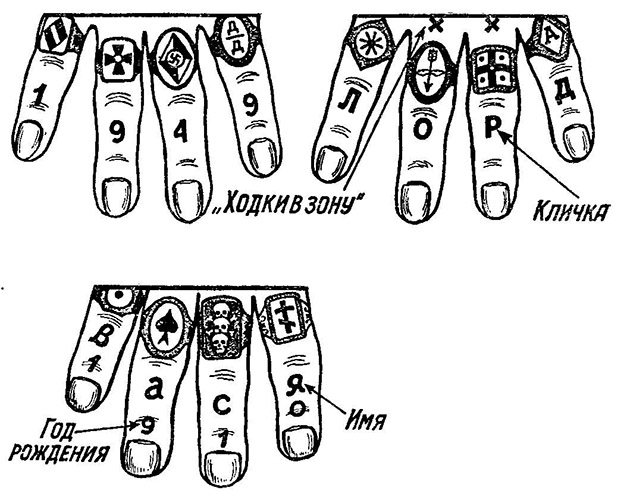

Thieves' tattoos on the fingers have many people whose criminal activity is connected with theft and robbery.
Most often such people have the following tattoo motifs on their phalanges:
| Cross on a black background | In most cases carries the general message of "Save and Preserve. |
| Numbers on fingers | Can indicate the amount of time served, the date of the year spent in captivity, or something else, incomprehensible to others, but which has its own special meaning for the prisoner. |
| Dollar . | Encountered on criminal bosses who specialize in stealing large sums of money, and who know how to open caches and safes (they are also called safecrackers). |
| The rings . | Usually found in recidivist criminals, tried more than once. |
| Star | Stuck on themselves rebels, those who don't accept the laws, established by the prison authorities. |
| Ring | Denotes belonging to the life of thieves and having a criminal record for illegal acts and crimes. |
Few thieves are left without such tattoos, because usually the criminals themselves willingly make them to themselves, wishing to denote their position in the criminal hierarchy. Below will be discussed in more detail subspecies of these tattoos, described their semantic meaning.
Cross on a black background
It is believed that the cross on the black background is the most innocuous tattoo and has a generalized meaning - symbolizes the gravity of a thief's fate, indicates that the holder of the figure "passed the zone".
This tattoo can also be interpreted as a kind of hope for God, for his son, the Savior Jesus Christ, meaning "Save and Preserve", as if indicating that the prisoner hopes for divine providence and believes that his fate is decided by higher forces, that everything bad that happened in his life was not his fault alone and he is under their protection and patronage.
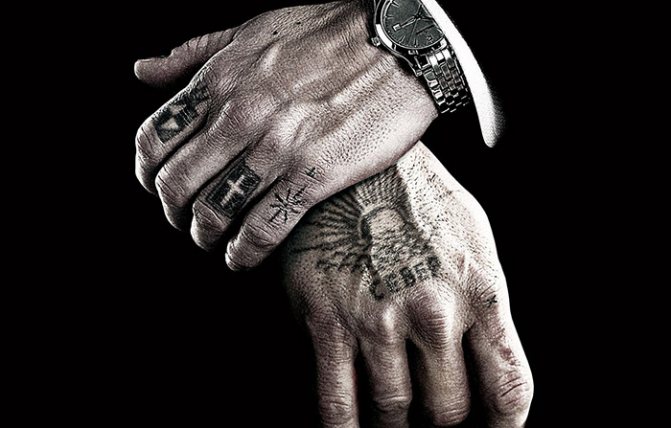

There is another interpretation of this tattoo - a cross on a black background may indicate a place of imprisonment by a person who has broken the law. In this case we are talking about prisons, which in the criminal environment are known as "Crosses". This name was given to the colonies because of the shape of the buildings, which were actually built in the form of crosses (so they look like that from above).
The cross on the black background can be depicted in different ways - it can be large, small, just the same size on all sides, or exactly resemble the crucifix that inmates stuff themselves with when their parents die.
Thieves ring
Thieves' finger tattoos in the form of rings are also not uncommon among robbers and amateurs who embezzle other people's property and money and who were forced to take responsibility for their crimes in places not so far away. The rings are most often pinned on repeat offenders who have served time in prison more than once.
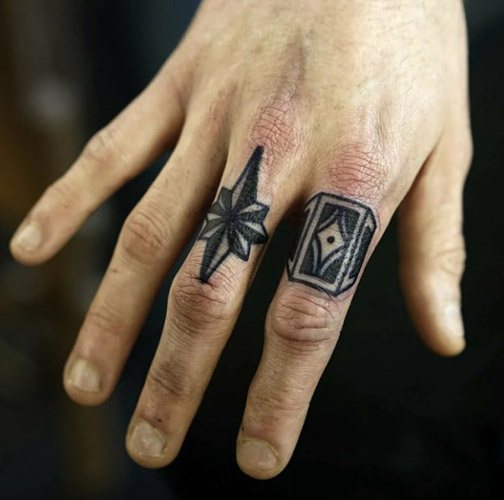

On the fingers of these prisoners can be seen as a single ring, as well as several rings on different phalanges. If the tattoo is a single one, it is most often located on the middle finger.
Ring seals can have a variety of images on the inside, each with a specific meaning:
- rhombus - The rhombus signifies belonging to the thieving elite, as well as the individual's rejection of prison rules and regulations. The owners of such finger tattoos have no desire at all to become on the path of correction, and those who force them to do so despise and in every way express their protest against any re-education measures aimed at them. Likewise, such convicts are hostile to those who do decide to break the vicious circle and end their criminal past;
- Ace of Diamonds - means that the inmate is not only a thief, but also a professional gambler, a cheat;
- The solid black square... - is for inmates who have served their time "from call to call."
- cross ace - can be drawn by influential authorities, "crooks", "ringleaders", "thieves in the law";
- an unequal black triangle inside the rectangular ringA black triangle inside a rectangle ring, covering half of it, indicates that the prisoner has low status. It is not uncommon for such tattoos to be forced on convicts against their will;
- a ring in the form of a rectangle with a simple uncolored rhombus inside - are applied to ordinary, unremarkable prisoners. They do not belong either to the lower or to the higher strata of the criminal world, as they are not distinguished by anything and do not have a certain status in the criminal hierarchy. This tattoo literally means that its owner is a "simple man" who is not part of any circles of the criminal community;
- A tattoo in the form of a white diagonal stripe on a black background with 3 black dotsand another variant of the image, indicating the special low status of the convicted person. In this case, it is associated with the inmate's experience of non-traditional sexual relationships (usually, both the emergence of such relationships and the tattoo is not a voluntary matter, it is subject to the "lowered" people, whom no one respects);
- a sign of authority - Inside the ring is a black stripe on the diagonal, and in the resulting triangles depicted card symbols - clubs and hearts suits;
- The hammer and sickle inside the ring - The hammer and sickle inside the ring show that the convicted thief doesn't agree with the punishment and considers himself undeservedly sentenced;
- a cathedral (church) is inscribed inside the ring - Such tattoos are applied to "experienced" thieves with at least 3 "walks";
- the setting sun over a small chessboard - Such a tattoo is known as "Evil" and has 2 meanings, the first of which indicates the hereditary status of the thief, when the person went in the footsteps of his father (the precepts of his beloved father - so some criminals decipher the abbreviation "Evil"), and the second - the desire to get even with the representatives of the law;
- if, in addition to theft, the prisoner has committed other especially grave crimesthen on his fingers can be tattoos of rings with skulls, knife handles, daggers;
- The dot inside the rectangle indicates that the convict attempted to escape;
- the word "TON" inside the ring is inscribed on the ring by criminals who happened to serve time in prisons with a particularly strict regime;
- the scarab beetle inside the rectangle The scarab beetle inside a rectangle is considered to be a talisman among inmates protecting them from all kinds of trouble and unpleasantness.
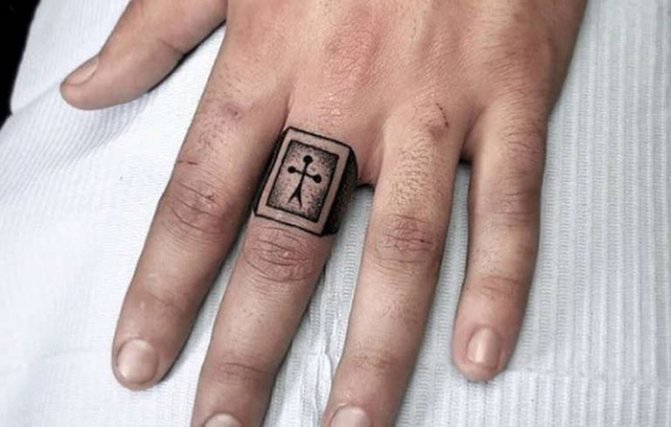

There are also variants with figures inside the rings, which may indicate the total number of terms and the total number of years spent behind bars. There are also other images that reflect the moral and ethical qualities of thieves. For example, a picture that resembles a cat's face symbolizes pride and independence, and the six of spades - subservience, snitching, obliging position of the prisoner.
Tattoo numbers on the fingers
Individuals who happen to be serving a sentence in prison, very often write exactly the numbers on their fingers, which can mean a variety of things.
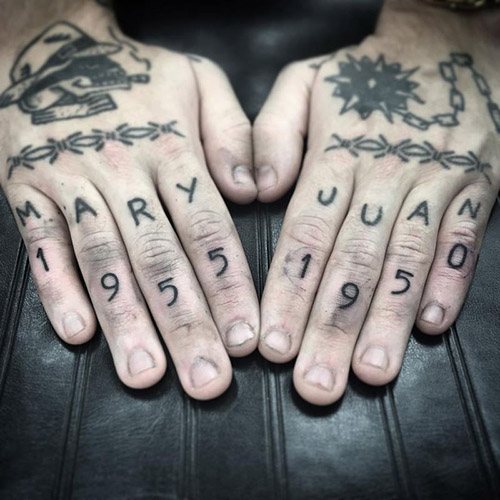

Rather conventionally they can be divided into several groups:
- various commemorative dates - most often these are terms of imprisonment;
- individual figures - reflect the total number of terms available to thieves and other criminals;
- Other figures, the meaning of which can only be understood by the prisoner himself - often those around him may not understand their meaning (even in the criminal environment), but for the prisoner himself they are very important and carry some information. These can be dates of death of a parent, days of important events that happened to the prisoner himself, dates related to children and life companions.
Nakolka "dollar"
Nakolka with a depiction of American currency is very popular, but it is on the fingers of her most often seen in convicted thieves. It is common for criminals to have the dollar tattooed along with a snake and vertical stripes that indicate the number of convictions expunged.
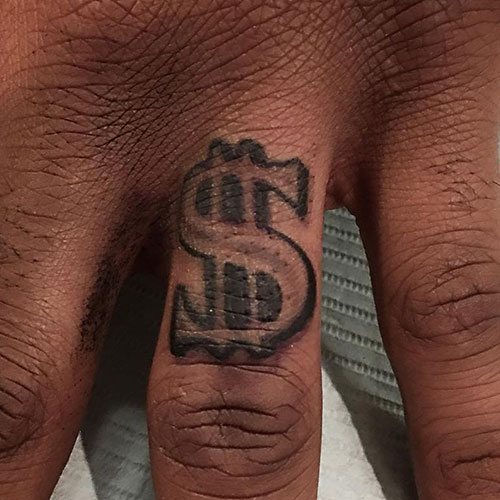

This tattoo can have several meanings:
- To indicate that its wearer is being tried for theft of public funds and resources;
- indicate that the inmate is a so-called "safecracker" - a thief who specializes in breaking into and stealing from safes;
- To symbolize the fact that a juvenile convict sees the meaning of life in money.
Tattoo "star".
Thieves' tattoos in the form of a star on the fingers are very popular among convicts. They are usually given to those who deny the general prison order and consider themselves rebels. The stars can be different: they can be depicted in a standard way and have five rays, or there can be eight or even nine rays. However, it is not the number of rays of the star that makes more sense, but what is depicted inside it.
Most often you can find pictures of the inside of a star-nakolka on the fingers such as:
- scalp (skull);
- zarnitsa (thunderbolt);
- A hook-shaped cross, which was a symbol of Hitler's Germany (swastika).
In this case, the same image can have different meanings.
So, for example, the skull inside the star can mean:
- "appeared in this world to suffer";
- "let things be as they will be."
- "everything will be solved after the firing squad."
Lightning inside the star denotes an unfriendly and even hostile attitude towards representatives of public order (police, militia), indicating that the bearer of such a tattoo is inclined to act violently against these individuals, as well as incite others to do so. The image of the swastika inside the star carries in itself a call for cruelty, aggression and anarchy.
The ring tattoo
Another widespread tattoo in the area is the ring. As in the case of the star, inside the ring there is necessarily some image that carries the main meaning. In this case, the number of rings can be absolutely different and occur on the fingers of both hands at once. If inside the ring there is a star upside down, it means that the prisoner worships Satan and is very far from God. A six-pointed star inside the ring would indicate a member of the Jewish nation.
The pacifist sign depicted inside the ring has a slightly different meaning than in normal civil society. While it is commonly known as the "cross of peace" everywhere, in thieves and criminals such a symbol inside a ring has the exact opposite meaning. It usually appears on the fingers of the most hard-to-educate criminals and offenders, who are not particularly eager to change anything in their lives.
Women convicted of theft and robbery also have rings on their fingers. Their rings are usually half-black.
Prisoners can have all kinds of tattoos on their fingers. In an effort to stand out and denote their status, almost all thieves make themselves such tattoos. Images located on the phalanges of the fingers are very visible to the people around them, which allows you to quickly read the information to others and understand what kind of element in front of him.
Especially a lot of meanings and options for interpretation has a tattoo ring, which can have very different meanings depending on what is depicted inside. To people far from the criminal subculture it is not always clear what exactly this or that tattoo signifies, however persons who have passed imprisonment, as a rule, as a rule, almost always have similar patterns on the body and are well versed in the prison tattoo symbolism.
Stars
The star is another tattoo of a thief in law. And a reputable one at that. These tattoos are most often located under the collarbones or on the knees (indicating that the prisoner is not kneeling in front of anyone). It should also be noted that prisoners with such tattoos cannot ask for a reduction in their sentence. They also never cooperate with law enforcement officials.
- Stars-nakolki thieves in the law with eight peaks denote denial. If a skull or swastika is also drawn in such a star, then such people consider themselves free from birth (regardless of the fact that they are currently imprisoned). If in such a star a radiance is drawn, this person solves all problems in a violent way.
- If the face of Jesus is depicted inside the star, such a drawing is applied only to the pahan.
- If the convict is a Muslim, he can draw knives or a crescent in the center of the star. This would mean "death to all apostates of the Muslim faith.
- If there is a seven-pointed star painted on the body, it could mean that the person only wants to look like a thief in law, not actually being one. This is the so-called dirty drawing.
Bat Tattoo: Meaning in the Army
The bat tattoo is a sign of military intelligence. It means that the fighter has the same qualities as a bat: easily finds a landmark in the air, climbs on various surfaces, like a rock climber, and, if necessary, can be under water for a while.


For the first time this symbol drew himself one of the soldiers, after which its application has become a tradition of scouts. Often, army tattoos with a bat are combined with the moon or a parachute dome.
Epaulettes, epaulettes.
Consider further the tattoo of a thief in law and their meanings. Be sure to dwell on epaulettes, which can also be seen on the shoulders of men who have passed the zone. What do they mean? Thus, epaulettes and epaulettes are a sign that a person can use violence, but only if it is justified. Such drawings are applied only to the criminal elite, i.e. authoritative criminals. Most often on shoulder straps they draw wings, crowns and suits of cards. If a tiger is depicted, it means the person is a persistent violator of order in the area. Skulls can also be depicted, which, again, determines the denial. If there are two letters, SS, underneath the picture, it means "kept his conscience".
Bitch War
After World War II there was a split in the criminal world. Many convicts had fought in punitive units, in violation of the thieves' code that no thief should serve in the army or cooperate in any way with the authorities. Many legitimate thieves found themselves demoted to Frayer
(outsider),
man
(peasant), or
bitch
(traitor, bitch). It was part of a power struggle; with limited resources in prison, outlawing "bitches" (
bitches
) allowed legitimate thieves to take more for themselves.[10]
The tattoos were changed and there was a new design to distinguish the two groups. The dagger piercing the heart was changed, an arrow was added: this tattoo indicated the lawful thief and his desire for revenge against those who violated the thieves' code. The compass rose became an indicator of aggression toward prison officials and "bitches," signifying an oath that "I will never wear it. shoulder straps" and hatred for those who served in the Soviet Army. Secret abbreviations were invented by legitimate thieves that" bitches "wouldn't recognize, such as SLON (lit." elephant "), which means"Bitches Like a Sharp Knife
" (" Bitches like a sharp knife ")."[11]
Various drawings.
We would like to consider other tattoos of thieves in law, which have not been mentioned above.
- A cathedral or church with domes. This means that the person has been in the zone. The number of domes is the number of walks.
- A spider in a web. This means that a person has spent most of his life in the zone. If the tattoo is on the left side of the neck - it means "pressed the regime". A spider without a spider's web illustrates a plucker. That is a petty thief, pickpocket.
- A beetle that crawls upwards also denotes a pickpocket thief.
- Two tulips applied to the brush means that the person will take revenge.
- A sailboat has several meanings. First and foremost, it denotes those people who might make a getaway. It also illustrates thieves-truck thieves.
- The butterfly is applied to the body of those who want to make an escape and wish to get to freedom as soon as possible.
- A knife piercing cards or a book is despicable. That is, those who do not want to make peace are recidivist thieves.
- The grave is a symbol of revenge.
- Persons convicted of rape may place a lion tearing a naked woman, a heart topped with a crown, or other similar tattoos on the body.
Military tattoos and their themes
Military tattoos, like prison tattoos, are not tattooed for beauty, as they indicate a person's social status, as well as his affiliation with certain troops.
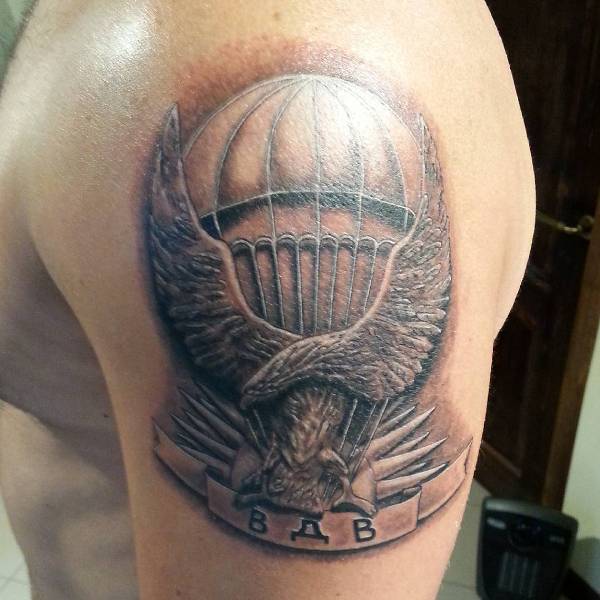

Conventionally, military tattoos are divided into several categories:
- by military rank;
- by branch of service;
- By place of service.
Today, many soldiers prefer to put a drawing on the body in their military unit, in the middle or at the end of the term. Stamping the image on the body ahead of time does not allow status: the tattoo is applied only to "grandfathers," not "spirits." You can say that it is a special mark of distinction about the period spent in the military unit.
It is worth knowing that such army nakolki are not always of great beauty, if performed by an unskilled master. In addition, they have an increased risk of infection in the process of application and healing.
Simple conclusions
Why know what the tattoos of thieves in the law look like? The photo of such drawings is a must-see for anyone who wants to get a tattoo in the ordinary world (not criminal). After all, if you miscalculate and draw a special drawing, you can pay for it. Sometimes even with your life. After all, the tattoos on the body of criminals and thieves in the law are not of the nature of jewelry, but of special information. If the symbol of the prisoners is worn by someone who has not seen the zone, it can end very badly. And to unravel the "faker" to a knowledgeable person is very, very easy.
Thieves' tattoos, meaning
The criminal world, unlike the real one, lives by its own laws. There are their ranks and regalia, their language (slang), as well as such an attribute as a tattoo. For them, the tattoo is not just a "painting" on the body - it is a language that can be used to convey a lot of information.
Where and how many times he sat, what "suit" (specialization pickpocket, burglar, burglar, etc.). "Denialist" - a person living by "concepts" who actively resists the administration.
Or maybe in a previous "move" you "misfired" and you "put down", putting the "stigma" for the "downcast".
The range of application of tattoos among convicts is quite wide, from authoritative tattoo symbolizing thieves' status to the "stigma of the downcast". And as much as it may sound, they help and support the hierarchy of the underworld.
Khrushchev's reforms and the decline of tattoos
In the 1950s, Nikita Khrushchev proclaimed a policy of eradicating crime in Soviet society. Along with propaganda condemning the "traditional thief," which grew in popularity in Russian culture, prisons toughened penalties for anyone identified as a legitimate thief, including beatings and torture. In response to this persecution, thieves' laws were tightened, and penalties for prisoners with unearned tattoos were increased from deportation to rape and murder.[12]
By the 1970s, tougher thief laws led to a crackdown on legitimate thieves organized by prison authorities, who often threw legitimate thieves into cells with inmates they punished or raped.[13] To ease tensions, criminal leaders outlawed initiation rites and outlawed rape as a punishment. Fights between prisoners were outlawed, and conflicts were resolved through the mediation of high-ranking thieves. In addition, the tattoo fashion spread to juvenile prisons, increasing the number of inmates with "illegal" tattoos. This ubiquity, along with the decline in violence, meant that "criminal bosses" stopped punishing "unearned" tattoos.
In 1985, perestroika and the new growth of tattoo parlors made tattooing fashionable and further weakened the status of tattoos as an exclusively criminal attribute.[2]
Statement
Tattoo artists or ring bearers
(stabbers), were held in high esteem. Tattoo needles could be called
A paddle
(ice axe),
bee
(bee),
spur
(spur), or
awl
(stinger), and the tattoo machine can be called
machine
(little machine) or
drill
(dentist's drill), and the ink is referred to as
fuel oil
(fuel oil) or
mud
(mud). The tattoos themselves were designated as.
(Advertisement),
regalka
(regalia),
branding
(brand), or
rospis
(painting).[9]

